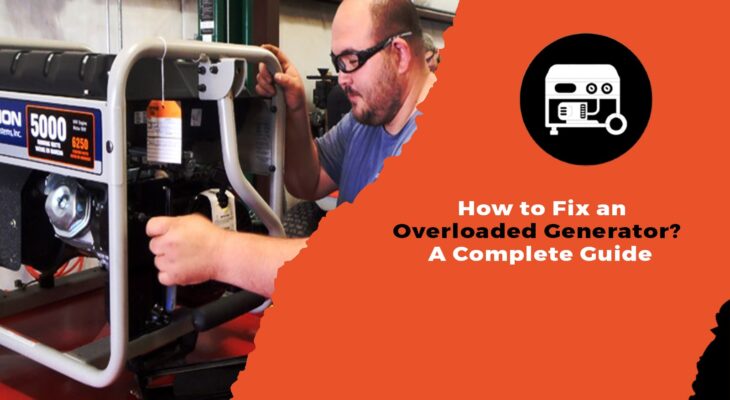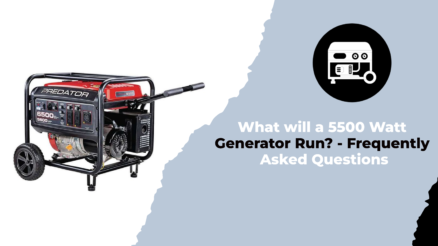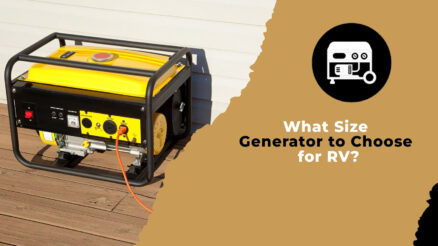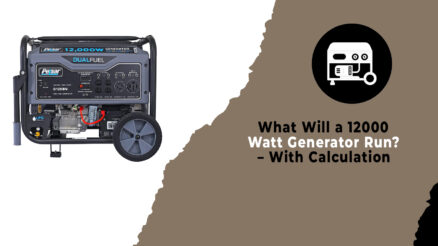Generator overloads are a common thing with generators and can be fixed easily if you get to the root cause of your generator’s overload.
In case the generator is overloaded, the motor will slow down and trip the generator overload protection relays if it is unable to produce the required power. Simply removing the problem and resetting it will solve the issue.
Overloaded generators can be fixed by switching them off and unplugging all cords and appliances. Remember, devices connected to a generator must have a combined wattage that is lower than its maximum capacity. Start the generator once the wattage has been reduced to an acceptable level by disconnecting enough devices.
Our article further contains complete detail on the overloading of generators, including the signs of generator overload, what causes the issue, and how it needs to be fixed.
What Does Generator Overloading Mean?
A generator overload usually occurs when there are too many appliances connected to it. Consequently, the generator produces more watts than it was designed for. Circuit breakers help prevent overloads on some generators, but if not, you should be aware of the signs.
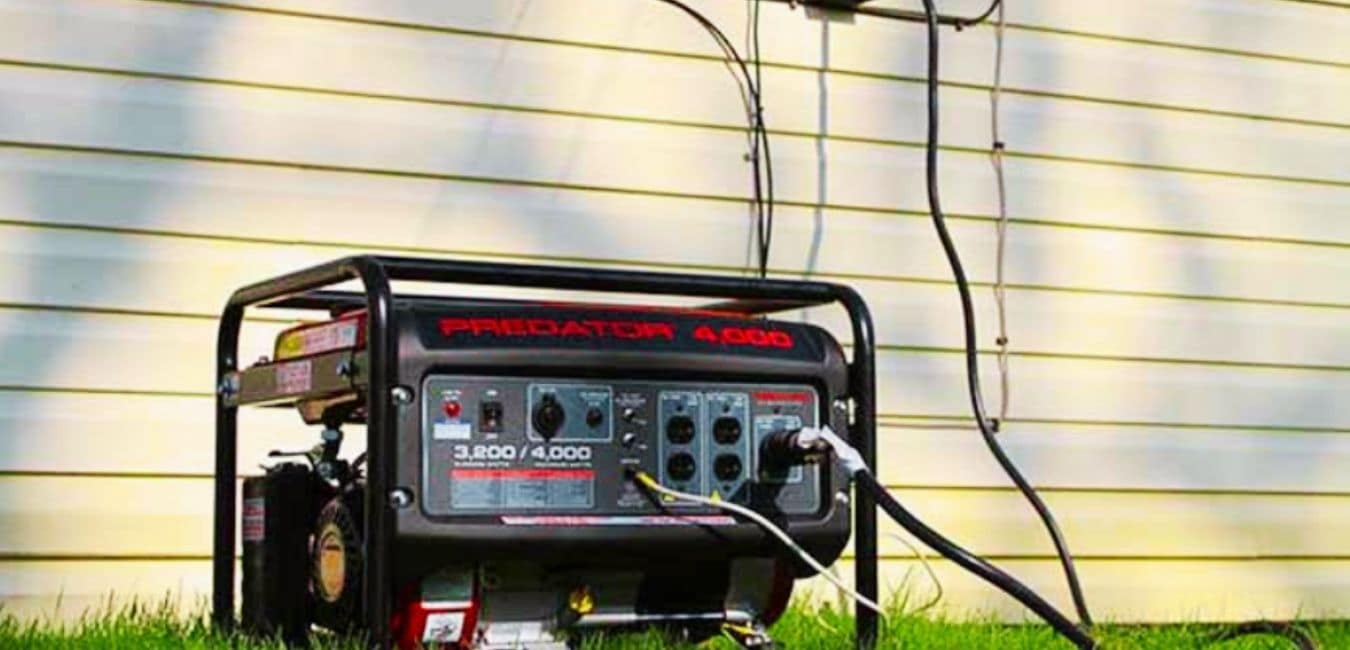
Common Signs that Your Generator is Overloading!
If you notice any of the following signs, your generator is likely overloaded and needs to be fixed:
- Power Output is Decreased
- The generator is Experiencing Overheating
- Generator’s Exhaust Shows Presence of Soot
- Smoke is Emitted from Generator’s Vents
- Cooling Fan Malfunction: Stops Spinning or Makes More Noise.
Power Output is Decreased
The first sign that might catch your attention is the power output of your generator is immensely low, it is likely because the generator is overloaded. To fix this, you will need to reduce the load on the generator by removing any unnecessary appliances or devices from the circuit. You may also need to increase the size of the generator.
The generator is Experiencing Overheating
Experiencing overheating of a generator is also one of the signs of generator overloading, there are a few things you can do to find the problem. First, check the oil level and make sure it is full. If the oil level is low that means your generator is experiencing overheating, for that purpose add more oil and retry starting the generator. If the generator still won’t start, or if it starts but then quickly shuts off, you may need to replace the oil filter.
A clogged oil filter can cause the engine to overheat. Do make sure that there is adequate ventilation around the generator. If the generator is enclosed in a tight space, the heat can build up and cause overheating as well.
Generator’s Exhaust Shows Presence of Soot
Another common sign that you notice is that the exhaust from your generator is showing signs of soot, it’s important to take action to fix the problem. Soot is a sign that the generator is overloaded and is not burning fuel efficiently.
Smoke is Emitted from Generator’s Vents
Suppose you have started the generator and smoke is being emitted from the vents of your generator, it is an indication that the machine is overloaded and needs to be fixed. Smoke coming from the vents is a sign that the generator is working harder than it should be and is at risk of overheating.
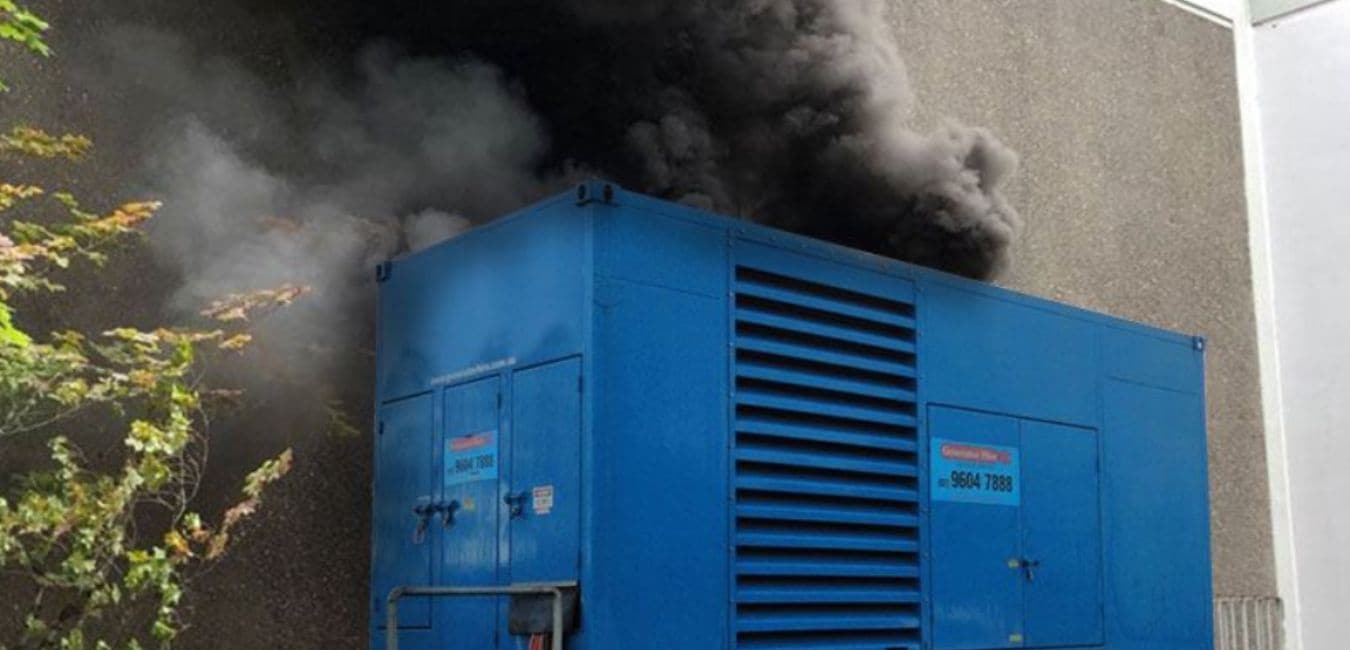
Overheating can damage the generator and cause it to break down. In this case, take immediate action to fix the problem. Begin by reducing the load on the generator. Remove any unnecessary items from the unit and turn off any electrical devices that are plugged into it. If possible, redistribute the load so that it is evenly distributed across all of the outlets.
Cooling Fan Malfunction: Stops Spinning or Makes More Noise.
Another on the list is if your generator’s cooling fan has stopped spinning or is making more noise than usual, it may be overloaded. To fix this, you will need to find the cause of the overload and correct it.
The most common causes of an overloaded cooling fan are:
- A dirty or defective air filter.
- An engine that is running too hot.
- A damaged or worn-out fan blade. If a fan blade is damaged or worn out, it can cause the fan to work harder than normal and eventually fail altogether.
- A faulty cooling system component.
Well, all in all, if you ever notice any of these signs, it’s important to take action immediately. Overloading your generator can damage the engine and lead to costly repairs.
Safety Precautions First!
To avoid overloading the generator, take the following precautions:
- Ensure that the generator is properly sized for the load.
- Do not operate the generator at full load for extended periods of time.
- Avoid using high-wattage appliances or devices on the generator.
- Use surge protectors on devices plugged into the generator.
- Keep the generator in a well-ventilated area.
How to Fix an Overloaded Generator? Four Simple Steps to Follow!
Whether you use a generator for camping trips or as a backup power source at home, there may be a time when starting an overloaded generator might be really difficult. In order to say goodbye to those annoying overload issues, do follow these four simple steps which can help you to fix the problem.

- First, check the oil level and make sure it is at the proper level.
- Second, check the air filter and clean or replace it if necessary.
- Third, check the spark plugs and clean or replace them if necessary.
- Fourth, check the battery and make sure it is fully charged.
If none of these steps fix the problem, you may need to take your generator to a professional for repairs.
Method for Troubleshooting Generator Overloads
In order to troubleshoot the overloaded generator, you need to do the following.
- Disconnect the power first.
- The engine should be turned off then.
- Now, ensure all devices and appliances are unplugged.
- Clean cooling air inlet if any blockages are found.
- If any blockages are found in the control unit, remove them as well.
- After checking, restart the engine.
- Flip the breakers back on and turn the power back on
- If your generator is rated at a reduced wattage, connect the reduced load.
Causes of Generator Overloading
There are many different things that can cause a generator to become overloaded. Some of the most common causes include:
- Running Too Many Appliances or Devices at Once: If you try to run too many things at once, your generator can easily become overloaded in the worst case it might not even start, So make sure to only run what is absolutely necessary and to spread out the load as much as possible.
- Incorrectly Sized Generator: If your generator is not properly sized for your needs, it is more likely to become overloaded. Be sure to consult with an expert before purchasing a generator so that you get one that is appropriately sized for your home or business.
- Faulty Wiring: If there are any issues with the wiring of your generator, it could easily become overloaded. Be sure to have an electrician check the wiring regularly to ensure that everything is in good working order.
- Overloading Circuits: Another common cause of generator overload is overloading circuits. This happens when too many appliances or devices are plugged into one circuit, causing the circuit breaker to trip and shut off power to the area.
To avoid this, make sure you know how many watts each appliance or device uses and do not exceed the rating for the circuit breaker. - Running on Low Fuel: If your generator runs out of fuel, it can easily become overloaded since it will have to work harder to generate power. Always keep your fuel tank full and be sure to have extra fuel on hand in case of an emergency need.
What If the Generator Keeps Tripping?
Generators are lifesavers during emergencies when power is unavailable for any reason. But it also becomes an inconvenience when your generator keeps on tripping for no apparent reason. The most common cause of a generator tripping is overloading.

This phenomenon occurs when too many electrical devices are running on the power that is being generated by your generator. This requires swift implementation of some measures to ensure that the generator is not overwhelmed.
Some steps that can be taken to fix an overloaded generator and prevent it from tripping:
- Turn off Non-Essential Appliances and Devices: You can turn off the devices and appliances that are non-essential and that you don’t need urgently. These could be entertainment devices like televisions, computers, consoles, etc. This will reduce the majority of the load on the generator and reduce the chances of it tripping.
- Check the Load Capacity of the Generator: Determining the maximum load capacity of the generator is an important step as it helps you in understanding what it is capable of. Most people overestimate what their generators can handle, and this solves that issue. You can look in the manual or on the manufacturer’s website for this information and then calculate how many appliances and devices can be run on it at the same time.
- Check for Short Circuits or Ground Faults: You can check the circuit breaker or fuse box to see if any breakers or fuses have tripped. In case you have a tripped breaker or blown fuse, you can reset/replace it and then try turning the generator on.
Can a Generator Overload Without Anything Plugged In?
Yes, it is very much possible for a generator to overload even if there isn’t anything plugged into the generator or if there are only a small number of electrical appliances or devices. One reason why this may happen is due to internal faults. A damaged alternator or voltage regulator could cause the generator to draw more power than normal which may cause it to overload and trip the circuit breaker or blow a fuse.
Next, it is also possible that the generator has engine problems, and the engine is running at an unusually high RPM. This causes the generator to produce power in quantities that it cannot handle and in turn leads to an overload.
It is also possible that some appliances that have high starting voltages such as air conditioners are connected to the generator. These devices require a higher amount of power the moment they turn on as compared to the amount of power that they require while they are running. If the generator is not capable of handling that initial power requirement due to low capacity, it may overload even if there are not that many devices connected to it.
In conclusion, a generator can overload even without anything plugged in. This can be caused by internal faults or engine problems. If your generator is overloaded, you should turn it off, unplug any appliances or devices, and check for any issues with the circuit breaker or fuse.
You might be interested to read:
What Happens if a Gas Generator is Overloaded?
When a gas generator is overloaded, it can lead to several issues which can cause it to become damaged or malfunction during operation. An overloaded gas generator may lead to intermittent power generation because it is trying to deliver more power than what it is capable of. This causes fluctuations in the output which will cause harm to sensitive electronics and appliances as those require stable power supplies to avoid permanent damage.
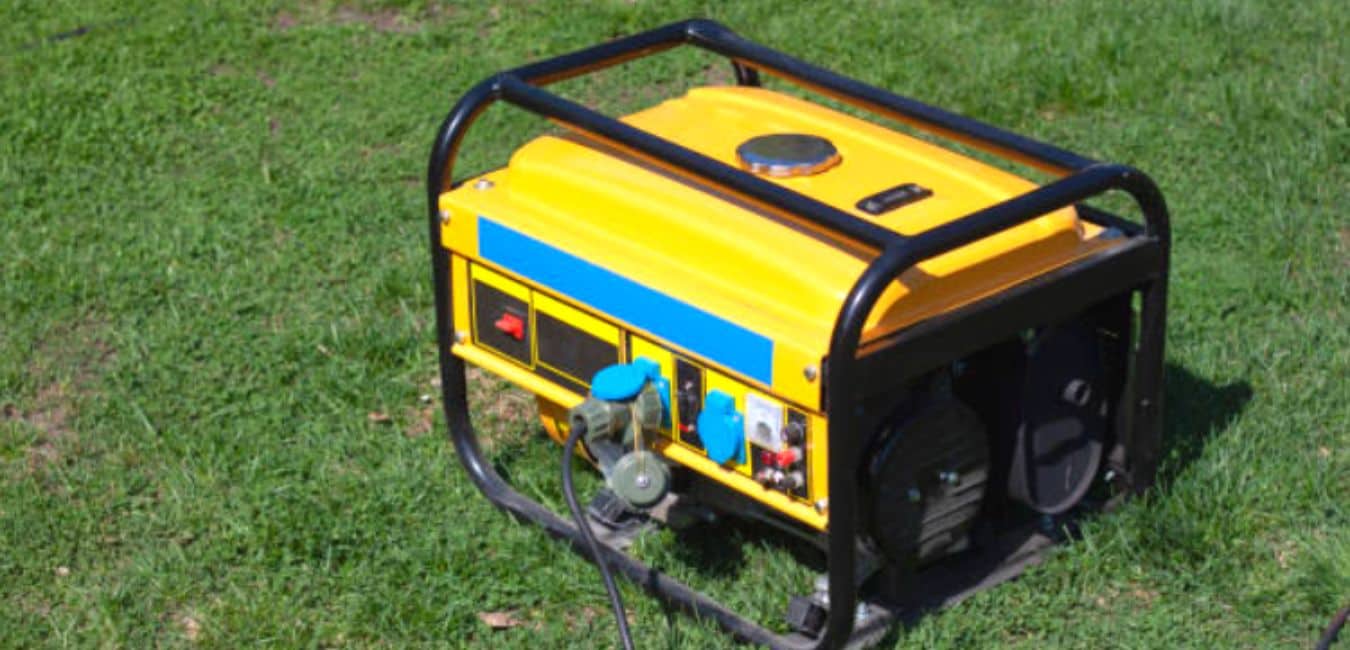
Overloaded gas generators can get really hot, which can lead to severe internal damage. Due to this, some parts of the generator such as the engine may get damaged which will cause it to stop working. It will also cause melted wires and an overheated fuel system.
While modern generators come equipped with circuit breakers that can prevent overloading, they are not foolproof. If the generator is overloaded beyond its capacity, the circuit breakers may trip, but this does not mean that the generator is not damaged. In some cases, the circuit breaker may not trip, and the generator may continue to operate beyond its capacity, causing further damage.
It is important to note that running a gas generator beyond its capacity is not a wise decision. Doing so can cause overheating, which can lead to the generator becoming a fire hazard. Gasoline is highly flammable, and any sparks or heat generated can cause a fire, leading to significant property damage or even loss of life. Hence, it is necessary to operate the generator such that it stays in satisfactory temperature ranges.
Tips for Avoiding Overload of a Generator
Generators are critical during times of need when there is no power supply, but an overloaded generator can cause a lot of damage to your appliances and devices. Here are some tips for you (you may also look for the Generator Maintenance Tips) to avoid such a scenario and ensure your generator runs smoothly without any hitches:
- Know Your Generator’s Capacity: Check the maximum wattage capacity it can handle. Make sure the total wattage of the appliances does not exceed the generator’s capacity and falls within the normal range.
- Prioritize Essential Appliances: During an outage, prioritize essential appliances such as the refrigerator, medical equipment, and lights. Avoid using and unplugging non-essential appliances to reduce the load as much as possible.
- Use Energy-Efficient Appliances: It is best to use energy-efficient appliances on a generator. These consume less power and also help reduce the load on the generator.
- Use Heavy-Duty Extension Cords: Extension cords should be heavy-duty and rated for outdoor use. Longer cords may cause voltage drops, which damage the appliances connected to the generator.
- Do Not Daisy Chain Extension Cords: Daisy chaining extension cords is a bad mistake that can cause overload. Use one cord from the generator to the appliance and don’t connect multiple cords together.
- Service the Generator Regularly: Regular maintenance of the generator can prevent overload. Check the oil level, air filter, and fuel level before each use. Also, follow the manufacturer’s recommendations for maintenance.
By following these tips, you can prevent overload of your generator and ensure that it lasts you a long time.
How to Fix an Overloaded Generator – FAQs
Conclusion
In a nutshell, remove all devices from your generator except one if it has overloaded. You should then wait at least 15 minutes before you restart the generator. After that, make sure that the generator has been started and allowed to run for a few minutes before connecting any other devices to it.
Examine the generator then and ensure that it does not overload again while running. In the event that the generator overheats again, repeat the process again until the generator starts working normally.


